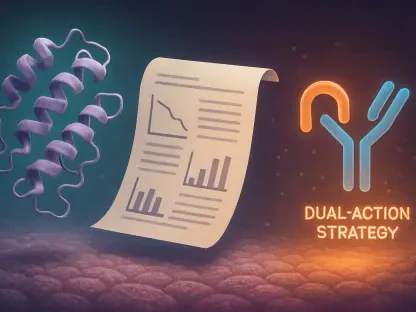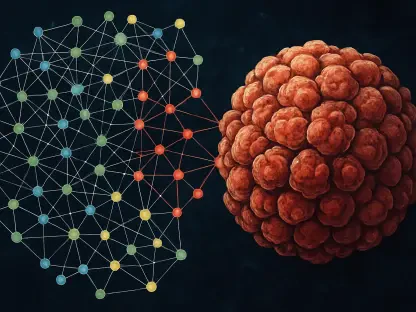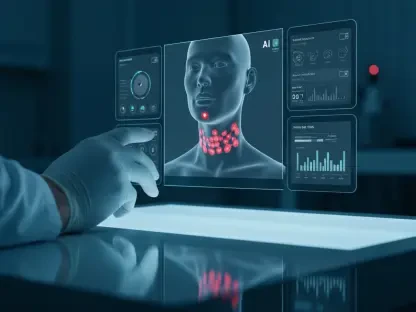CAR-T cell therapy has emerged as a groundbreaking approach in cancer treatment, leveraging the body’s immune system to target and destroy cancer cells. Since its inception in 2017, this innovative therapy has rapidly evolved, with numerous products reaching commercialization and receiving regulatory approvals. As we look towards the future, the CAR-T cell therapy market is poised for significant growth and transformation, driven by technological advancements, strategic mergers, and a focus on expanding applications beyond hematological malignancies.
The Evolution of CAR-T Cell Therapy
CAR-T cell therapy involves collecting a patient’s T-cells, genetically modifying them to recognize and attack cancer cells, and reinfusing them into the patient. This process transforms the T-cells into “living drugs” that multiply and persist in the body, providing long-term cancer-fighting capabilities. The therapy’s success hinges on the ability of T-cells to direct immune responses and eliminate cancer cells effectively.
Since the first CAR-T cell therapy was approved in 2017, the market has seen rapid advancements. As of 2025, eleven CAR-T cell therapies have reached commercialization, with seven receiving U.S. FDA approval. These therapies, including Kymriah, Yescarta, and Tecartus, have demonstrated remarkable efficacy in treating blood cancers, significantly improving patient outcomes and survival rates. The swift progress in this field underscores the potential of CAR-T cell therapy to revolutionize cancer treatment, even as researchers continue to develop newer generations of therapies.
The initial focus on hematological malignancies, such as leukemia and lymphoma, has paved the way for substantial advancements. Researchers have been able to refine techniques, ensuring higher precision in T-cell genetic modification, which in turn increases the effectiveness of treatments. The continuous evolution of CAR-T cell therapy showcases the relentless pursuit of innovation and the determination of the medical and scientific communities to conquer cancer.
Market Dynamics and Growth Drivers
The CAR-T cell therapy market has experienced substantial growth, driven by significant mergers and acquisitions. Notable transactions include Celgene’s acquisition of Juno Therapeutics for $9 billion and Bristol-Myers Squibb’s $74 billion purchase of Celgene. Gilead Sciences’ $11.9 billion acquisition of Kite Pharma further underscores the economic potential and competitive activity in this market.
These mergers and acquisitions have not only fueled market growth but also facilitated the development of new therapies and expanded the reach of existing ones. The influx of investment and resources has accelerated research and development, leading to the commercialization of more CAR-T cell therapies and the exploration of new applications. The growing financial interest highlights the confidence investors and pharmaceutical companies have in the transformative potential of CAR-T cell therapies.
Collaborations between biopharmaceutical companies have played a crucial role in advancing CAR-T cell therapy. By combining expertise and resources, these collaborations have driven significant progress in clinical trials and regulatory approvals. The partnerships have also stimulated innovation, leading to the development of more robust and versatile CAR-T therapies. The competitive landscape continues to evolve, encouraging companies to strive for excellence and maintain a leading edge in the rapidly growing market.
Challenges in Treating Solid Tumors
While CAR-T cell therapies have shown exceptional success in treating hematological malignancies, their application to solid tumors remains a significant challenge. Solid tumors present unique obstacles, such as identifying effective antigens and achieving high response rates in clinical trials. The complexity of the tumor microenvironment and the difficulty in penetrating solid tumors have limited the efficacy of CAR-T cell therapies in these cases.
To address these challenges, researchers are exploring innovative approaches, including the development of allogeneic therapies using donor cells. Allogeneic CAR-T cell therapies have the potential to overcome the limitations of autologous therapies, offering a more accessible and scalable solution for treating solid tumors. Additionally, advancements in gene-transfer technologies, CRISPR, and electroporation techniques are being employed to enhance T-cell modification efficiency and improve therapy outcomes.
The tumor microenvironment poses a significant obstacle, as solid tumors create a protective niche that inhibits immune cell infiltration and function. Researchers are investigating ways to modify CAR-T cells to better navigate and thrive within this hostile environment. Intelligent design of CAR-T cells, which includes the potential to resist immunosuppressive signals from solid tumors, could enhance their effectiveness. The combination of CAR-T cells with other immunotherapeutic agents might also help create a more conducive environment for attacking solid tumors.
Technological Innovations and Future Strategies
The future of CAR-T cell therapy lies in continuous innovation and the development of new strategies to overcome existing barriers. Companies are investing in cutting-edge technologies to enhance the safety, effectiveness, and adaptability of CAR-T cell therapies. Innovations such as switchable CARs (sCARs), suicide genes, and armored CARs are being explored to improve therapy outcomes and reduce potential side effects.
Combining CAR-T cell therapies with other treatment modalities, such as mRNA vaccines and oncolytic viruses, is another promising approach. These combinations aim to enhance the immune response and improve the overall efficacy of CAR-T cell therapies. Additionally, efforts are being made to streamline manufacturing processes and reduce the “vein-to-vein” time, making CAR-T cell therapies more accessible to a broader patient population.
Switchable CARs offer the advantage of turning the CAR-T cells on and off based on specific signals, thereby helping to manage toxicity and control responses. Suicide genes provide an additional safety layer, enabling the destruction of CAR-T cells if severe side effects occur. Armored CARs are equipped with additional functionalities such as secreting cytokines or immune-modulating agents to counteract the suppressive tumor microenvironment. These innovations aim to enhance CAR-T cells’ precision, persistence, and safety.
In pursuit of more efficient treatments, companies are focusing on optimizing cell manufacturing techniques. Speeding up the vein-to-vein time not only makes therapies more practical but also allows for timely interventions at critical stages of disease progression. Emerging bioprocessing technologies and automation continue to play key roles in meeting these goals, striving to make CAR-T cell therapies more scalable and economically viable.
Economic and Reimbursement Considerations
The high cost of CAR-T cell therapies and the complexities of reimbursement pose significant barriers to patient access. Treatment costs vary significantly across regions, with notable differences in reimbursement mechanisms in the U.S., Europe, and Asia. To improve patient access, new payment models and favorable reimbursement policies are essential.
Efforts are underway to develop scalable and economically feasible solutions that can broaden the acceptance and adoption of CAR-T cell therapies. By addressing the economic and reimbursement challenges, the industry can ensure that more patients benefit from these life-saving treatments. Innovative payment arrangements, like outcomes-based pricing, where payment is tied to patient response, are being considered and, in some cases, implemented to facilitate financial accessibility.
Navigating the reimbursement landscape is complex, especially given the high upfront costs of CAR-T cell therapies. Stakeholders, including healthcare payers, providers, and manufacturers, are working together to create sustainable models that ensure long-term viability. Policies and frameworks that can adapt to the evolving nature of CAR-T cell therapies are crucial to solving economic challenges. By finding common ground within the regulatory and economic context, more patients are likely to gain access to CAR-T cell treatments.
Expanding Clinical Trials and Research
The landscape of CAR-T cell therapy clinical trials is rapidly evolving, with a growing number of studies focusing on both liquid and solid cancers. The majority of clinical trials to date have targeted hematological malignancies, but there is an increasing emphasis on exploring the potential of CAR-T cell therapies in treating solid tumors.
The role of NIH funding and the proliferation of scientific research published on platforms like PubMed highlight the significant academic and clinical interest in CAR-T cell therapies. Ongoing research and clinical trials are crucial for identifying new antigens, optimizing therapy protocols, and developing next-generation CAR-T cell therapies that can address a wider range of cancers. The commitment of the research community to pushing the boundaries of what CAR-T cell therapy can achieve is evident in the expanding scope and depth of clinical investigations.
As more clinical trials progress to later stages, the data gathered will provide invaluable insights into the safety and efficacy of CAR-T cell therapies, particularly in challenging contexts like solid tumors. This wealth of information will not only guide the refinement of existing therapies but also herald the development of novel approaches and combinatory treatments. The increased collaboration between academic institutions and industry players has also spurred significant advancements, leveraging collective expertise to tackle the complex challenges in this field.
Future Outlook and Emerging Trends
CAR-T cell therapy has emerged as a revolutionary approach in the fight against cancer, harnessing the body’s immune system to specifically target and eliminate cancer cells. Since its groundbreaking debut in 2017, this cutting-edge therapy has evolved rapidly, leading to the commercial availability of numerous products that have gained regulatory approval.
Looking ahead, the CAR-T cell therapy market is expected to experience substantial growth and significant transformation. This anticipated expansion will be driven by a range of factors including advancements in technology, strategic mergers and acquisitions, and a broader application of the therapy beyond its initial focus on hematological (blood-related) cancers.
The future holds the promise of CAR-T therapies not only improving in terms of efficiency and accessibility but also targeting a wider array of cancer types, potentially including solid tumors. With ongoing research and clinical trials, the hopes are high that the therapy will become an integral part of cancer treatment protocols, offering new hope to patients who previously had limited options.
Overall, the success and continued progress in CAR-T cell therapy underline the critical importance of innovation in medical science, offering a powerful tool in the global effort to combat cancer.









